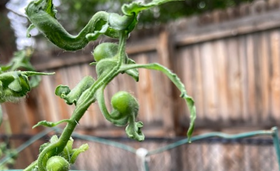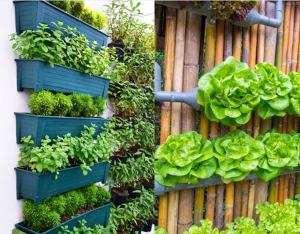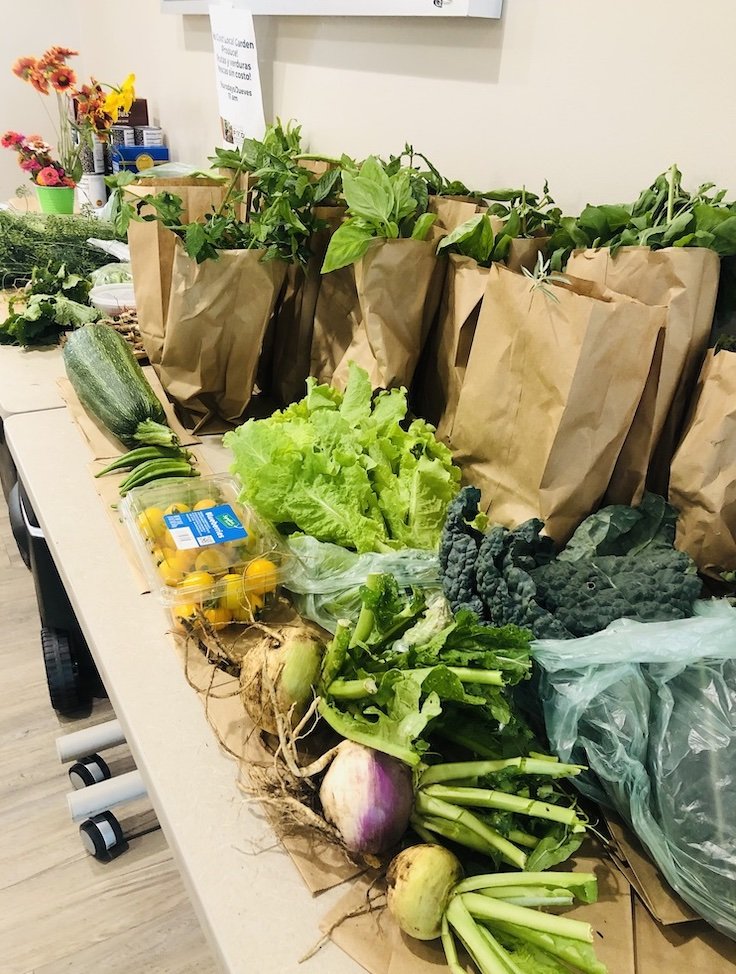Worst weeds and how to stop them
Guest Contributor: Cassey Anderson, CSU Horticulture Agent

It’s July. If all has gone well you’ve got some flourishing plants, perhaps you’ve had numerous harvests of lettuce, beets, spinach, peas and other cool season crops. Perhaps if you’re very lucky some of your warm season crops are beginning to set fruit (peppers and tomatoes?). However, although your garden is thriving something else may be growing well in your garden beds too: weeds!
Weeds are, by definition, a plant in a place we do not want them. So, an errant tree seedling (I get these all the time) in your vegetable bed is a weed even if you’d like it somewhere else in your yard. But I’m not here to talk about less common weeds like trees, rather let’s look at the top six heavy hitter weeds you may commonly see in your vegetable beds. It could be tempting to just leave them be, but weeds often outgrow desirable crops, taking valuable nutrients and water from our vegetable plants, so management is important.
First, let’s define a few things. The first thing to know about your weeds is their life cycle. Are they annual or perennial? This will change how you manage them. Perennial weeds must be eliminated through persistence. Perennials have large taproots or large root systems, and some may reproduce via their roots. This means that if you let them grow, they can refill the energy storage in their root system undoing your hard work. Annuals grow from seed each year, so if you can prevent the seeds from germinating (pre-emergent, mulch), or remove them when very young (stirrup hoe, pulling) then you prevent them from going to flower/seed.
For manual removal of weeds, you’ll want several tools: your hands (or even better, a willing helper!), gloves, a soil knife or digger (I use a Hori Hori and adore it), and a stirrup hoe. For perennial weeds you want to remove as much of the root as possible. Annual weeds can be removed successfully if only some of the root has gone, although too little may mean it can grow back.

There are many options for chemical control. If you want organic control you can use boiling water, or burn down agents such as clove oil, herbicidal vinegar, citrus oils etc. Be aware these won’t kill the whole plant and likely will need repeated applications once it regrows. Conventional systemic herbicides applied carefully can also get you good weed control. Focused treatment is always better than broadcast treatment so be sure to apply only to the weed. Contact your local Extension office for specific recommendations for your types of weeds.
Now let’s get into some specifics. I’m going to provide the common name and scientific names so you can find more detailed information than I have time for here.
PERENNIALS:
Bindweed (Convolvulus arvensisi)
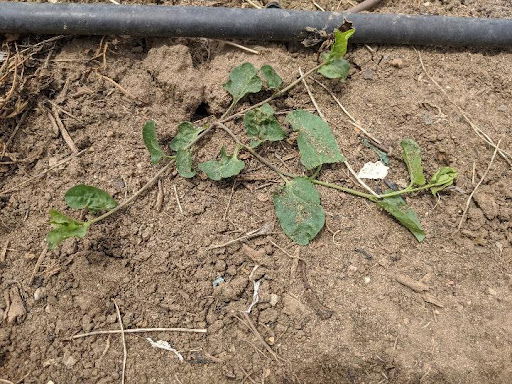
This is one of the most persistent weeds in the home garden. It’s not easy to eradicate. Remove it when young, scout numerous times a week and remove as much of the root system as possible. Herbicides in conjunction with pulling may be the best bet but control can take up to 3 years even with the use of herbicides. Root systems can be long (30’+) so do not let the plant grow and feed back into the root system. Try to pull before the plant flowers and produces seed (at the stage shown here is great), as bindweed seeds can live for up to 50 years.
Canada Thistle (Cirsium arvense)

Another perennial with deep, long lived root systems. Can grow rapidly and it is difficult to eradicate except through persistence. Remove when you see leaves emerging. If using herbicides, treat when young (as in the picture). Once they get more mature, they don’t take the pesticide up as well and control will be limited. Be sure to wear some tough gloves if removing manually as they are spiny and can poke through garden gloves.
Dandelion (Taraxacum officinale)
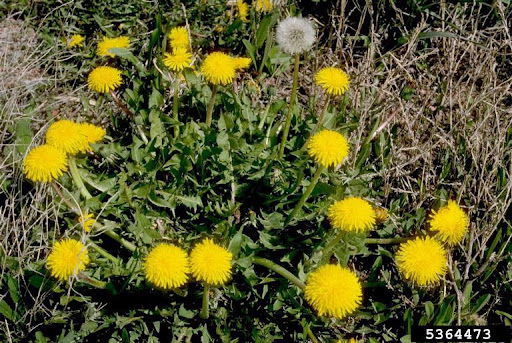
Commonly seen as both a garden friend and foe, the dandelion is a taprooted perennial. This means it has a root that looks like a carrot. Removing only part of the root will not eliminate the plant. Be sure to remove as much of the root as possible to get the best control. These are more common on the edges of the vegetable garden, and mulch can reduce the germination of new plants. If you’d like to keep a few as an early food source for pollinators, you can remove the flowers once they’ve closed and before they develop seed heads.
ANNUALS:
Purslane (Portulaca oleracea)
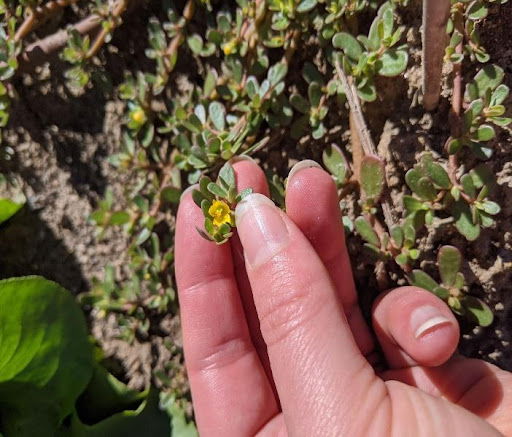
Purslane is another weed that is friend or foe depending on your definition. It can produce up to 250,000 seeds that remain viable for up to ten years. Generally, this one is at least easy to control, pull before it flowers. You can use it as a tart addition to your summer salads. Because it is an annual it has a small root system and is easy to pull out by hand or with something like a stirrup hoe.
Lambsquarters (Chenopodium album)
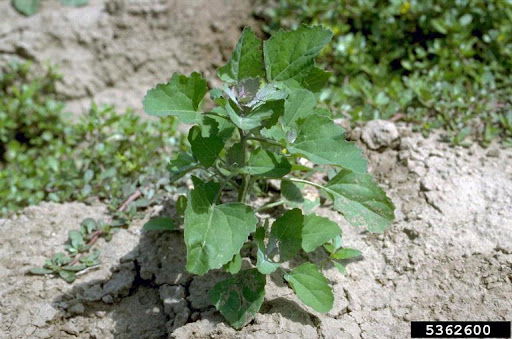
Lambsquarters are another that are weedy and common but can also be an addition to your spring garden salad if found early (before flowering). Control is going to be most effective when young as the root systems can get large and dense once more mature. Scout frequently. If an entire bed is overtaken with lambsquarters some herbicide control could be warranted. It’s easy to control, we need at least one like that!
Pigweeds (redroot or prostrate are common) (Amaranthus spp.)
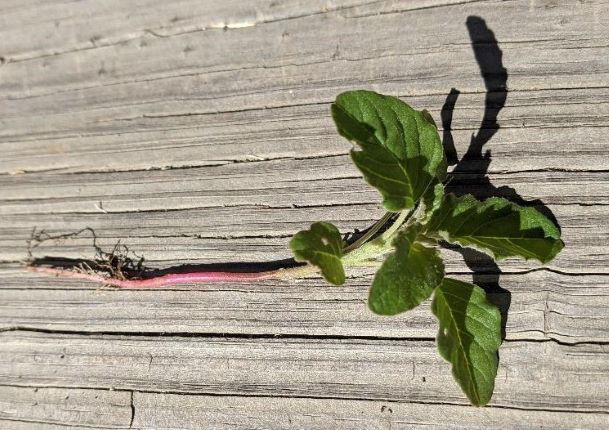
Pigweeds are common but often overlooked in the vegetable garden when immature but can become many feet tall if allowed to grow. Pull young and they won’t come back. If they get large try to pull or remove before they develop seeds as seeds are long lasting. These are related to amaranth but don’t have the tasty qualities of the plant we grow for harvest.
HONORABLE MENTION:
Grasses can be annual or perennial depending on type. If you use hay as a mulch this is a common annual weed. If you have turf creeping into your vegetable garden from your lawn, it’s likely perennial. Removing as you see growth and mulching for annual grasses are going to be your best bets for success in control. If your lawn tries to invade frequently you may consider a buffer or barrier. You can bury a metal “wall” to slow the grass or put in a wide strip of mulch at least 3-4” deep to keep the grass at bay.
Whew! You made it through our whirlwind tour. There are many more weeds that we just didn’t have time to cover and so, as always, contact your local county Extension office if you have further questions.
What if every gardener planted just one extra plant to share?
One small donation can have a tremendous impact. Just imagine, if every gardener planted one extra plant to share, collectively, we would have an abundant source of fresh, healthy produce available to be distributed to families experiencing food insecurity in our own communities! The free Fresh Food Connect mobile app connects you to a local hunger relief program, then manages and tracks your donations of homegrown produce throughout the season. Download the app today!
